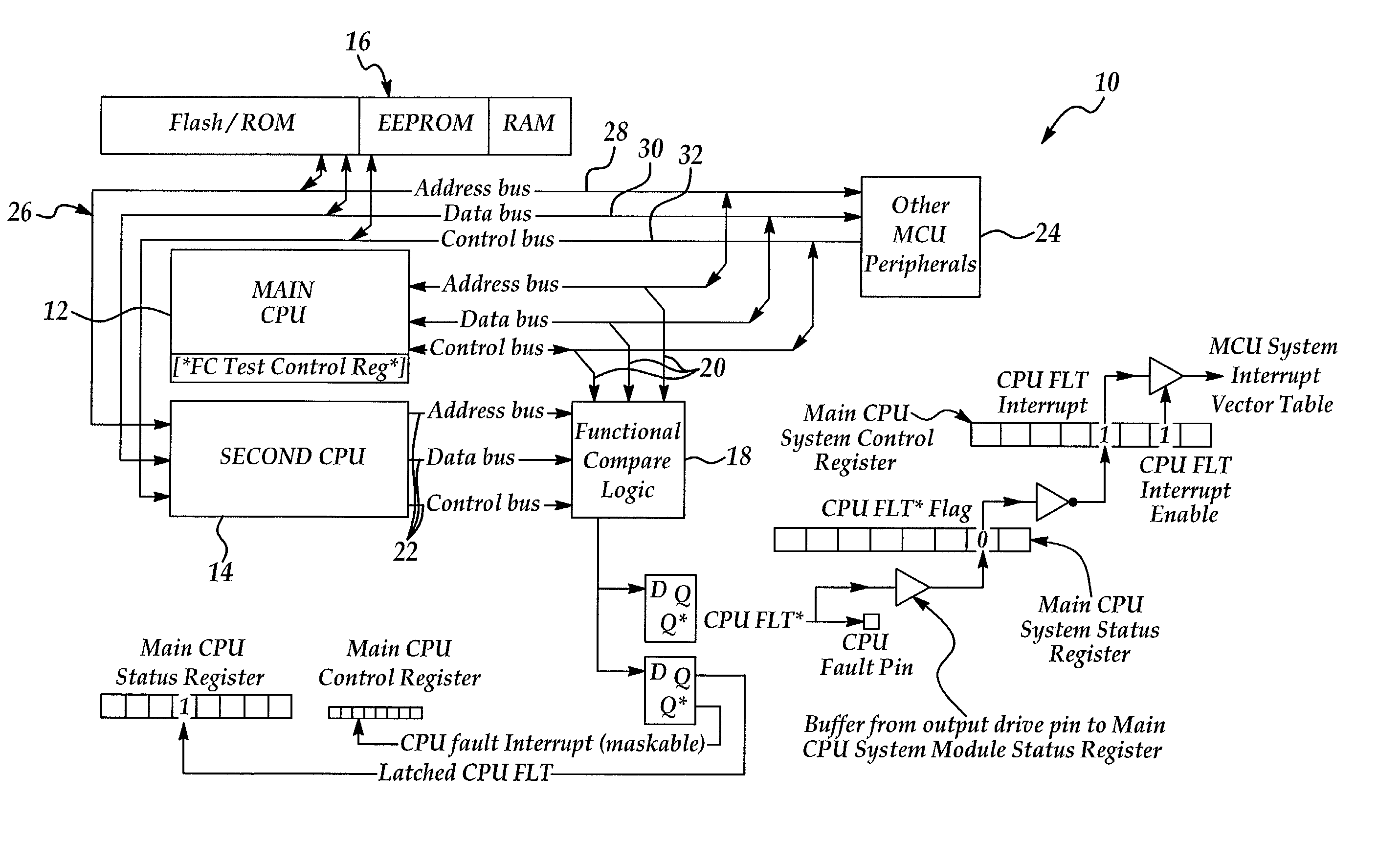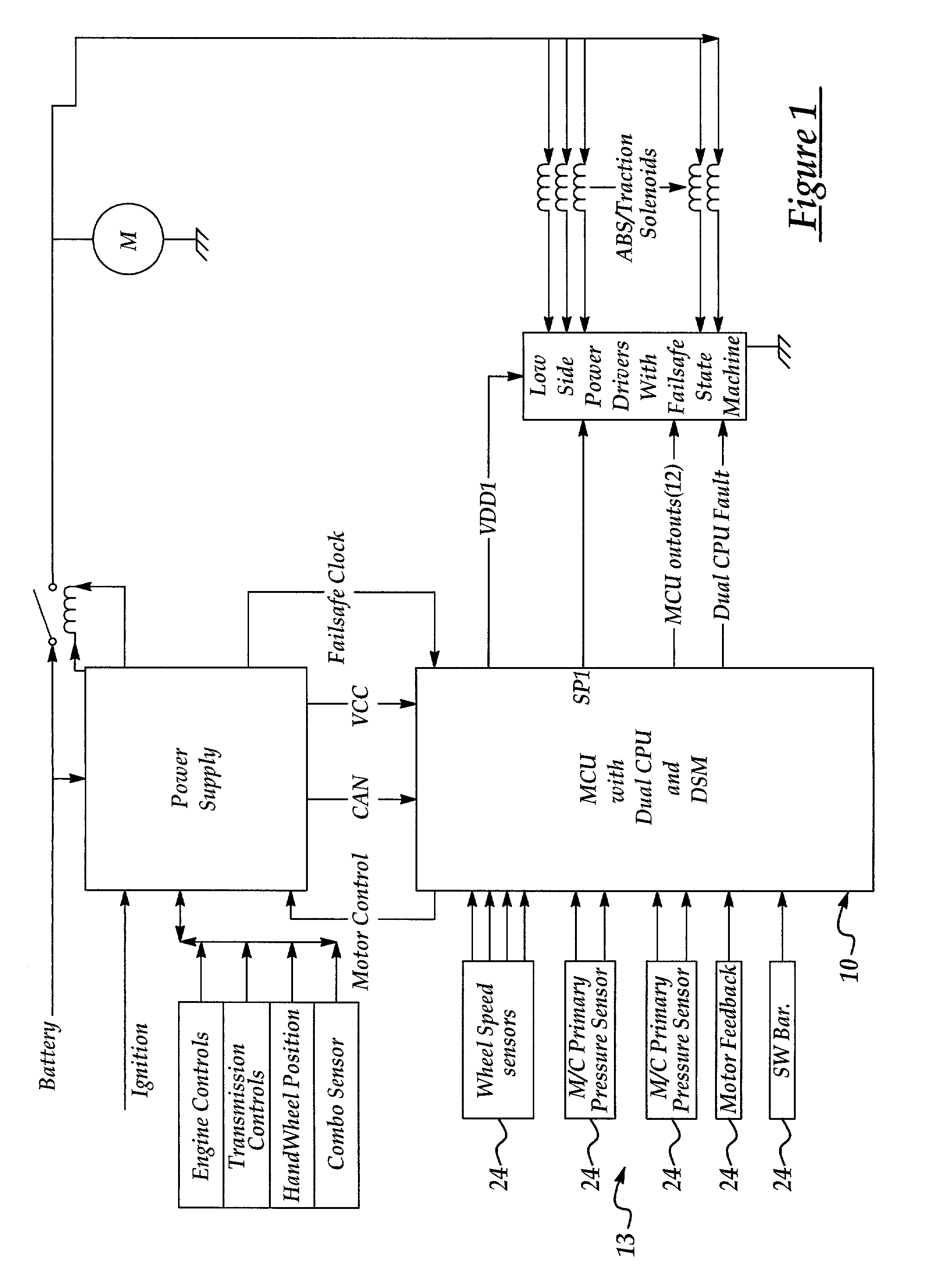Secured microcontroller architecture
a microcontroller and secure technology, applied in the field of microcontroller architecture, can solve the problems of limited limited ability of the cpu to test its own instruction set with a practical number of test vectors, and a questionable practice of allowing the device under test (such as the cpu) to test itself, so as to reduce the dependency on the application algorithm for fail-silent implementation, reduce sensitivity, and increase system reliability
- Summary
- Abstract
- Description
- Claims
- Application Information
AI Technical Summary
Benefits of technology
Problems solved by technology
Method used
Image
Examples
Embodiment Construction
[0046]Although the invention is described and illustrated in terms of several particular embodiments, the teachings of the present invention may be modified for other system fault analysis. The present invention is particularly suitable for use in automotive applications such as anti-lock braking systems, airbag systems, steering modules and “X-by-wire” applications. “X-by-Wire” applications include steer by wire, brake by wire, electronic throttle control and electronic airbag deployment. “X-by-Wire” applications due to their importance to vehicle operation will depend on real-time system verification. Other automotive applications include collision avoidance systems and adaptive cruise control. The present invention may be used for other applications outside the automotive realm. Examples include the medical field in such devices as pacemakers, heart-lung machines, aviation and marine navigation electronics. It is also likely that this invention will comprise a role in smart actua...
PUM
 Login to View More
Login to View More Abstract
Description
Claims
Application Information
 Login to View More
Login to View More - R&D
- Intellectual Property
- Life Sciences
- Materials
- Tech Scout
- Unparalleled Data Quality
- Higher Quality Content
- 60% Fewer Hallucinations
Browse by: Latest US Patents, China's latest patents, Technical Efficacy Thesaurus, Application Domain, Technology Topic, Popular Technical Reports.
© 2025 PatSnap. All rights reserved.Legal|Privacy policy|Modern Slavery Act Transparency Statement|Sitemap|About US| Contact US: help@patsnap.com



